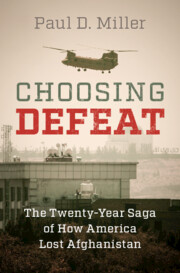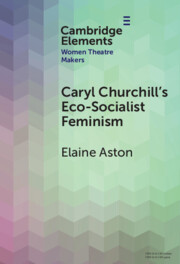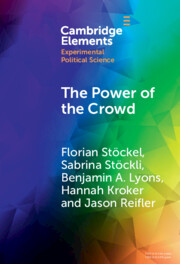Refine search
Actions for selected content:
3392675 results
Abnormal functional network connectivity mediates the relationship between depressive symptoms and cognitive decline in late-onset depression
-
- Journal:
- Psychological Medicine / Volume 55 / 2025
- Published online by Cambridge University Press:
- 08 October 2025, e227
-
- Article
-
- You have access
- Open access
- HTML
- Export citation
Mendelssohn’s Symphonies on Record: The Elusive Call of the Symphonic Cycle
-
- Journal:
- Nineteenth-Century Music Review , First View
- Published online by Cambridge University Press:
- 08 October 2025, pp. 1-11
-
- Article
-
- You have access
- Open access
- HTML
- Export citation
A Semiotics of Coziness and Disappearing Night
-
- Journal:
- Signs and Society ,
- Published online by Cambridge University Press:
- 08 October 2025, pp. 1-30
-
- Article
-
- You have access
- Open access
- HTML
- Export citation
A WINDOW ON WOMEN’S DRESS AND COMMUNITY IDENTITIES IN THE FOURTH CENTURY BC IN SOUTHERN ITALY: FUNERARY ICONOGRAPHY IN CAMPANIA AND LUCANIA
-
- Journal:
- Papers of the British School at Rome , First View
- Published online by Cambridge University Press:
- 08 October 2025, pp. 1-56
-
- Article
- Export citation
Navigating the Underground in Plain Sight: Experiences of Clandestine Solidarity in South Africa
-
- Journal:
- African Studies Review / Volume 68 / Issue 3 / September 2025
- Published online by Cambridge University Press:
- 08 October 2025, pp. 472-491
-
- Article
-
- You have access
- Open access
- HTML
- Export citation
A comparative review of Australia’s fashion and textile industry and global climate perspectives across five decades (1970s–2020s)
-
- Journal:
- Global Sustainability / Volume 8 / 2025
- Published online by Cambridge University Press:
- 08 October 2025, e41
-
- Article
-
- You have access
- Open access
- HTML
- Export citation
Mechanistic models for rhizolith formation and their implications for paleoenvironmental reconstructions
-
- Journal:
- Quaternary Research , First View
- Published online by Cambridge University Press:
- 08 October 2025, pp. 1-19
-
- Article
-
- You have access
- Open access
- HTML
- Export citation
Development of the Philippine guidance document for the use of real-world evidence for clinical assessment of health technologies
- Part of
-
- Journal:
- International Journal of Technology Assessment in Health Care / Volume 41 / Issue 1 / 2025
- Published online by Cambridge University Press:
- 08 October 2025, e72
-
- Article
-
- You have access
- Open access
- HTML
- Export citation
Under pressure: paediatric hypertensive dilated cardiomyopathy secondary to renal artery stenosis
-
- Journal:
- Cardiology in the Young , First View
- Published online by Cambridge University Press:
- 08 October 2025, pp. 1-3
-
- Article
-
- You have access
- Open access
- HTML
- Export citation
On Namba Forcing And Minimal Collapses
- Part of
-
- Journal:
- Forum of Mathematics, Sigma / Volume 13 / 2025
- Published online by Cambridge University Press:
- 08 October 2025, e170
-
- Article
-
- You have access
- Open access
- HTML
- Export citation
Accounting for the Normative Force of Project-Dependent Reasons
-
- Journal:
- Philosophy , First View
- Published online by Cambridge University Press:
- 08 October 2025, pp. 1-17
-
- Article
-
- You have access
- Open access
- HTML
- Export citation
Echoes of History: Legacies of the Benin Bronzes and Restitution Within the Black Atlantic
- Part of
-
- Journal:
- The Journal of African History / Volume 66 / 2025
- Published online by Cambridge University Press:
- 08 October 2025, e17
-
- Article
-
- You have access
- Open access
- HTML
- Export citation
Alternating sign matrices with reflective symmetry and plane partitions:
 $n+3$ pairs of equivalent statistics and a Cauchy-type identity
$n+3$ pairs of equivalent statistics and a Cauchy-type identity
- Part of
-
- Journal:
- Forum of Mathematics, Sigma / Volume 13 / 2025
- Published online by Cambridge University Press:
- 08 October 2025, e168
-
- Article
-
- You have access
- Open access
- HTML
- Export citation
Kings of Oxen and Horses: Draft Animals, Buddhism, and Chinese Rural Religion By Meir Shahar. New York: Columbia University Press, 2025. 376 pp. $140.00 (cloth), $35 (paper), $34.99 (e-Book)
-
- Journal:
- Journal of Chinese History , First View
- Published online by Cambridge University Press:
- 08 October 2025, pp. 1-11
-
- Article
- Export citation

The Transformation of Protest Politics
- Coming soon
-
- Expected online publication date:
- October 2025
- Print publication:
- 30 November 2025
-
- Element
- Export citation
THE UNIFICATION TYPE OF ŁUKASIEWICZ LOGIC WITH A BOUNDED NUMBER OF VARIABLES
- Part of
-
- Journal:
- The Journal of Symbolic Logic , First View
- Published online by Cambridge University Press:
- 08 October 2025, pp. 1-18
-
- Article
-
- You have access
- Open access
- HTML
- Export citation

Choosing Defeat
- The Twenty-Year Saga of How America Lost Afghanistan
-
- Published online:
- 07 October 2025
- Print publication:
- 07 October 2025

Caryl Churchill's Eco-Socialist Feminism
-
- Published online:
- 07 October 2025
- Print publication:
- 06 November 2025
-
- Element
- Export citation

The Power of the Crowd
- How the Public Can Both Spoil and Improve Social Media as a Source of Information
-
- Published online:
- 07 October 2025
- Print publication:
- 06 November 2025
-
- Element
-
- You have access
- Open access
- HTML
- Export citation
CJN volume 52 issue 6 Cover and Front matter
-
- Journal:
- Canadian Journal of Neurological Sciences / Volume 52 / Issue 6 / November 2025
- Published online by Cambridge University Press:
- 07 October 2025, pp. f1-f5
-
- Article
-
- You have access
- Export citation










